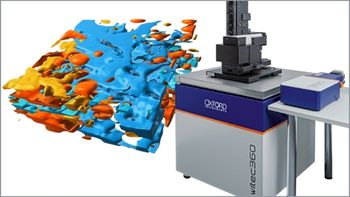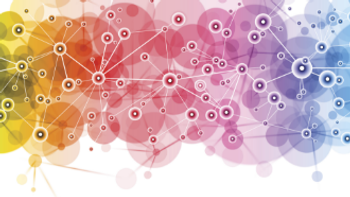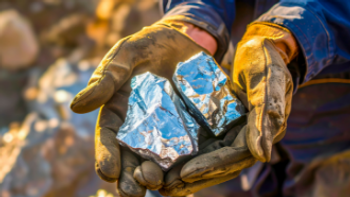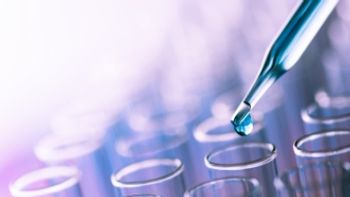
Atomic Spectroscopy in Practice: A Joint Virtual Conference Presented by Spectroscopy Magazine and The Society for Applied Spectroscopy
***Live: Tuesday February 23, 2021 & Wednesday February 24, 2021*** Spectroscopy magazine and the Society for Applied Spectroscopy (SAS) are pleased to present a joint virtual conference on February 23 and 24, 2021, called “Atomic Spectroscopy in Practice.” This two-day event will provide highly practical information for atomic spectroscopists and analytical laboratory staff working with molecular atomic techniques. *** On demand available after final airing until Feb. 24, 2022***
Register free:
Event Overview:
Spectroscopy magazine and the Society for Applied Spectroscopy (SAS) are pleased to present a joint virtual conference on February 23 and 24, 2021, called “Atomic Spectroscopy in Practice.” This two-day event will provide highly practical information for atomic spectroscopists and analytical laboratory staff working with molecular atomic techniques.
The first day, February 23, will cover sample preparation, atomic absorption (AA), and inductively coupled plasma-optical emission spectroscopy (ICP-OES) and ICP–mass spectrometry (ICP-MS).
THE second day, February 24, will cover X-ray fluorescence, laser-induced breakdown spectroscopy (LIBS), and laser-ablation ICP-MS (LA-ICP-MS).
Each day, there will be a morning session and an afternoon session. The morning sessions will provide a series of tutorials on fundamentals and troubleshooting, followed by a question-and-answer (Q&A) period with all of the speakers. In the afternoon sessions, leading instrument suppliers will give 20-minute talks providing educational troubleshooting and tips-and-tricks.
The event will also include a special award plenary for the 2021 Emerging Leader in Atomic Spectroscopy, with a talk by this year’s winner, L. Robert Baker of the The Ohio State University.
All attendees will receive a certificate of completion from the Society for Applied Spectroscopy.
Tuesday, February 23: Sample Preparation, AA, and ICP Techniques
Morning session, 10:00 am—Noon EST
10:00 am Session introduction
Laura Bush, Editorial Director, Spectroscopy
10:05 am Introduction to Sample Preparation for Spectrochemical Analysis
Dula Amarasiriwardena, Hampshire College
This introductory session will offer both theory and practice of sample preparation methods for spectrochemical analysis (AAS, ICP-OES and ICP-MS). The conventional thermal methods (hot plate, dry ashing, fusion) as well as microwave-assisted digestions, and high-pressure high temperature acid digestions will be covered. The chemical and physical underpinnings of sample decomposition will be discussed. The participants will learn about how to minimize the background element concentrations and contaminant control, practical hints as well as safety issues. The session is an ideal starting point for beginners. Key learning objectives include:
Learn about various sample decomposition methods available for spectrochemical analysis.
How does sample digestion work? Learn about the chemical and physical basis.
How to determine the effectiveness of decomposition.
How to achieve low backgrounds and contaminant control and safety concerns.
Learn about sample preparation hints, pitfalls, and safety issues.
10:35 am Introduction to Atomic Absorption Spectroscopy
Dula Amarasiriwardena, Hampshire College
This session will cover recent advances in analytical atomic spectroscopy including flame atomic absorption spectroscopy (FAAS), hydride generation (HG)-AAS, cold vapor(CV)-AAS, graphite furnace AAS (GF-AAS), and atomic emission spectroscopy (AES). Course content includes fundamentals, theory, instrumentation, practice, troubleshooting hints, as well as common applications. Analytical merits and limitations of each method will be presented. Key learning objectives include:
What’s in that box? We will learn about the theory, basic instrumentation, and practice of flame AAS, AES, (HG)-AAS, (CV)-AAS and GF-AAS.
How to choose suitable instruments conditions and how to remove potential spectral and chemical interferences.
Will learn about calibration approaches for quantitative analysis.
11:05 am Introduction to ICP-OES and ICP-MS: Key Concepts, Processes and How They Affect Signals, Capabilities, and Potential Sources of Error
John Olesik, The Ohio State University
The (simple) fundamental processes that control ICP-OES (optical emission) and ICP-MS (mass spectrometry) signals will be described including conversion of samples to atoms and ions, excitation and light emission, and ion transport from the ICP through the mass spectrometer. How each process affects ICP-OES and ICP-MS signals (related to a corresponding component of the instrument) and how the sample itself can affect the fundamental processes, and therefore, signal intensities will be considered. Spectral overlaps and matrix effects that can affect analysis accuracy will be discussed.
12:05 pm Question-and-answer period
Afternoon session, 2:00–4:00 pm EST
2:00–4:00 pm Leading instrument suppliers give educational 20-minute talks providing troubleshooting and tips-and-tricks
Wednesday, February 24: XRF, LIBS, and LA-ICP-MS
Morning session, 10:00 am—12:30 EST
10:00 am Session introduction
Laura Bush, Editorial Director, Spectroscopy
10:05 am X-ray Fluorescence Spectrometry with Emphasis on Field Applications
Stan Piorek, Rigaku
This session will start with brief description of X-ray fluorescence (XRF), including how it originated and then evolved from large laboratory setups into portable, handheld devices. Then it will highlight features and limitations of handheld XRF, followed by overview of its main applications. It will also discuss common misconceptions and typical mistakes associated with use of handheld XRF devices.
10:35 am Overview of Qualitative XRF with Application Examples from Cultural Heritage and Archaeology
Mary Kate Donais, St. Anselm College
X-ray fluorescence (XRF) spectrometry is a simple, nondestructive technique that provides valuable elemental information for a wide range of industries and areas of research. This presentation will provide an overview of XRF spectrometry with an emphasis on qualitative analysis. It will start with a tutorial on qualitative analysis via XRF, including spectral interpretation and interferences. This will be followed by a discussion of different data analysis approaches. The final part of the talk, drawing on the speaker’s years of research experience in cultural heritage analysis and archaeology, will emphasize applications of XRF spectrometry. Examples will include sample types such as glass tesserae and fabrics, pairing of XRF spectrometry with other instrumental methods, and different instrument designs such as portable XRF and micro-XRF.
11:05 am Laser-induced Breakdown Spectroscopy: From Plasma Formation to Actionable Results
Amy Bauer, Ocean Insight
This session will guide the participants through an analysis concept to completed measurement and will focus on identifying measurements for which LIBS is not simply acceptable, but ideal. Topics to be covered include:
- Laser choice tailored expected outcome
-Wavelength, beam profile
- Detection systems and limitations
-What is local thermodynamic equilibrium and why does it matter?
- Spectral output and more
-Beyond the raw spectra to concentrations, trends, depth profiling and imaging
- Two use-cases that highlight the use of LIBS above other analytical techniques.
11:35 am Laser Ablation ICP-MS: A Review of Fundamentals and Applications
Lydia Breckenridge, Bristol-Myers Squibb
This session will provide an introduction to the science behind laser ablation–inductively coupled plasma–mass spectrometry (LA-ICP-MS), including an overview of various instrumental components. The fundamentals will be illustrated with examples of practical applications of the technique.
12:05 pm Question-and-answer period
Special Award Plenary: The Emerging Leader in Atomic Spectroscopy Award
1:30–2:00 pm Visualizing Charge and Spin Dynamics Using Ultrafast XUV Spectroscopy
L. Robert Baker, The Ohio State University
The need to characterize materials and devices that enable new technologies is pushing the boundaries of atomic, molecular, and material spectroscopies. For example, at the heart of energy conversion and information processing is the need to control charge and spin transport at interfaces. Many artificial systems rely on heterogenous catalysts to accomplish at surfaces what nature does using molecular assemblies, making it important to understand the material properties and surface states that mediate electron dynamics at interfaces. Despite its importance, the ability to directly measure charge and spin dynamics on the ultrafast time scale with chemical-state resolution remains a significant challenge, requiring the development of new spectroscopic tools. Toward this goal, we have developed extreme ultraviolet reflection-absorption (XUV-RA) spectroscopy as a surface-specific analog of X-ray absorption spectroscopy. This talk focuses on the development of this method and its recent applications, which range from directly observing charge separation at catalytic interfaces to studies of ultrafast spin state switching in magnetic semiconductors.
Afternoon session, 2:00–4:00 pm EST
2:00–4:00 pm Leading instrument suppliers give educational 20-minute talks providing troubleshooting and tips-and-tricks
Speakers:
Dula Amarasiriwardena, Hampshire College
John Olesik, The Ohio State University
Stan Piorek, Rigaku
Mary Kate Donais, St. Anselm College
Amy Bauer, Ocean Insight
Lydia Breckenridge, Bristol-Myers Squibb
L. Robert Baker, The Ohio State University
Time and Date:
On demand available after final airing until Feb. 24, 2022
Sponsors: CEM, Glass Expansion, Leco, Milestone, Millipore Sigma, Tofwerk, Rigaku
Register free:
Newsletter
Get essential updates on the latest spectroscopy technologies, regulatory standards, and best practices—subscribe today to Spectroscopy.





